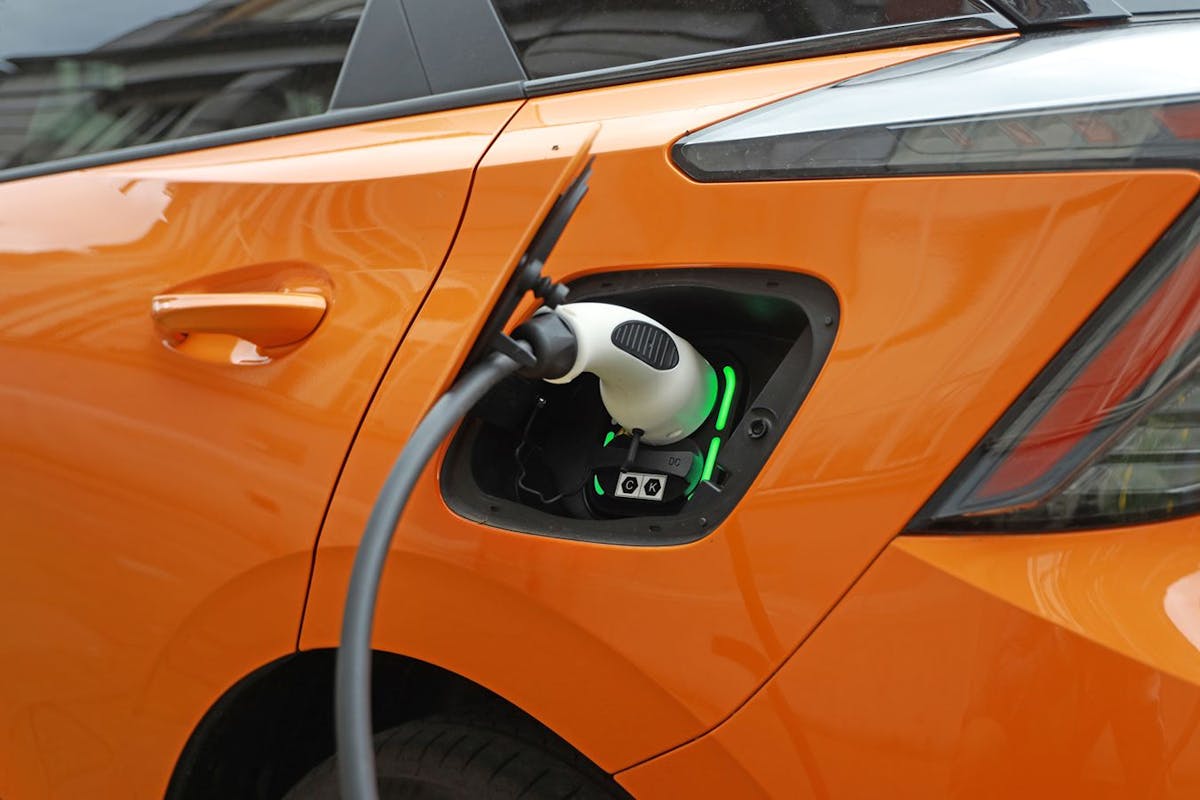How Long Does an EV Battery Last?
Last edited

Author
Andrew Giermak
Solar and Electrification Writer and Editor

Editor
Andrew Blok
Electrification and Solar Writer and Editor

Making the transition to an electric vehicle is an exciting move, but it may bring up one big question: How long will the battery really last?
EV manufacturers build confidence by backing their batteries with warranties that are typically eight years or 100,000 miles, guaranteeing at least 70% of the original capacity. Thanks to a growing EV market and improving EV and battery technology, we now have real-world data and studies that show batteries are often outperforming these warranties. This guide will explore the factors that determine your battery's longevity and steps you can take to maximize a battery’s lifespan.
See how much you can save with home energy changes
Want to learn about how your home uses energy? Download the Palmetto app today to see and start earning discounts toward an EV charger and other home energy devices.
How Long Does an EV Battery Last?
A good baseline of an electric vehicle battery’s expected lifespan is the manufacturer’s warranty for the battery. Many EV makers provide warranty coverage for eight years or 100,000 miles for a new battery. The coverage guarantees 70% or higher battery capacity at the eight-year or 100,000-mile mark.
As more EVs are out on the roads, more information and studies are being gathered all the time. There are studies and real-world evidence that many batteries effectively outlast the vehicles and have functional capacities and overall lifespans of 15-20 years.
A 2024 study from Geotab, which deals in fleet management, looked at 10,000 EVs and found the average battery degradation rate is 1.8% a year, which is down from a 2.3% average in 2019. EV batteries degrading at about 1.8% a year mean a potential lifespan well beyond the common eight-year warranty.
A 2024 study of 20,0000 EVs by Recurrent Auto, which offers EV battery insights to EV owners, found less than 1% of EVs from 2016-24 have had battery replacements, other than manufacturer recall replacements.
What Affects an EV Battery Lifespan?
There are multiple factors that can change an EV battery’s lifespan. Some of these you can control, but others you really can’t. Here’s a look at what may shorten or lengthen a battery’s life.
Temperature
EV batteries can have their capacity degrade faster if exposed often and repeatedly to temperature fluctuations, especially extreme heat. High heat (starting at about 85 F, but this figure varies by battery/manufacturer) accelerates the chemical reactions in a battery causing more wear and a gradual effect on lifespan.
Models of battery degradation done by the National Renewable Energy Laboratory show charging your battery at high temperatures degrades battery capacity more quickly over the years than charging at lower temperatures.
Modern EVs have thermal management systems with liquid which cools or warms the battery as needed.
Extreme cold, under 32 F, can have an impact, too, although not as severely as extreme heat. If a lithium-ion battery is charged in extreme cold, it can reduce battery capacity over time by causing metallic lithium deposits, reducing the battery’s power and performance.
Avoiding temperature extremes is an important reason to charge your battery — an EV battery or another rechargeable battery — in a place with controlled temperature.
See how much you can save with home energy changes
Charging limits (DoD and SoC)
Following an EV battery’s recommended depth of discharge (DoD) and state of charge (SoC) is a way to get more out of the battery.
For daily use, the general rule is to keep the battery charged between 20-80%. Charging a battery to 100% and letting it sit fully charged and connected to the charger for extended periods puts high voltage stress on the cells, increasing the rate of degradation. Running the battery to below 20% SoC also stresses the cells. Most manufacturers allow you to set a recharge cap. Setting it to 80% can keep you from overcharging your battery.
Charging speed
How you usually charge your battery can cause wear and decrease the number of charging-discharging cycles a battery is likely to have. DC fast charging stresses an EV battery more than slower charging.
The high rate of energy transfer generates more heat and can stress the internal components. This effect is mitigated by the thermal management system, but daily fast charging will likely cause more long-term wear than level 2 or level 1 recharging.
Physical damage
A battery is in a protective case in a vehicle, but physical damage can still happen from accidents or debris striking the battery. Minor damage over the years can cause internal wear, such as micro-fractures of components, slight misalignments, or wear on the thermal management system. All of this can cause incremental capacity loss.
Potential stressors for EV batteries
| Stressor | Best practice |
|---|---|
| Temperature | Keep a battery out of extreme heat or extreme cold while charging |
| State of charge and depth of discharge | Keep a battery charged from 20-80% as often as possible |
| Charging speed | Use level 1 or level 2 charging most often, and level 3 less frequently |
| Physical damage | Accidents or debris can cause damage |
Can I Extend My EV Battery’s Lifespan?
Following the recommendations for your specific battery regarding depth of discharge and state of charge is one factor you can control. Using level 1 or level 2 charging more often than level 3 is another step that’ll help.
One more is making sure a battery management system’s software updates are current. The battery management system gives EV batteries updated charging algorithms and thermal efficiency.
You can pair your electric vehicle with home solar power for the best savings and cleanest way to drive. For more on your potential solar savings, you can use our home solar estimate tool. Or, download the new Palmetto app to learn about your home energy usage and earn discounts on EV chargers.
See what home electrification can do for you:
Frequently Asked Questions
What is the cheapest way to charge an EV battery?
The least expensive way to charge an EV battery is with free solar power from your own solar panels.
What is the difference between a level 1 and level 2 EV charger?
Level 2 charging is faster, as it uses a higher voltage, than level 1 EV charging. Level 1 chargers add about 3-5 miles of driving range an hour. Level 2 chargers add from 12-25 miles per hour.
What are the most important EV charging tips?
The most important factors for EV charging and EV battery lifespan are keeping the battery and battery charger in a safe temperature range and to charge, and drive, within the manufacturer’s recommended state of charge and depth of discharge range.


